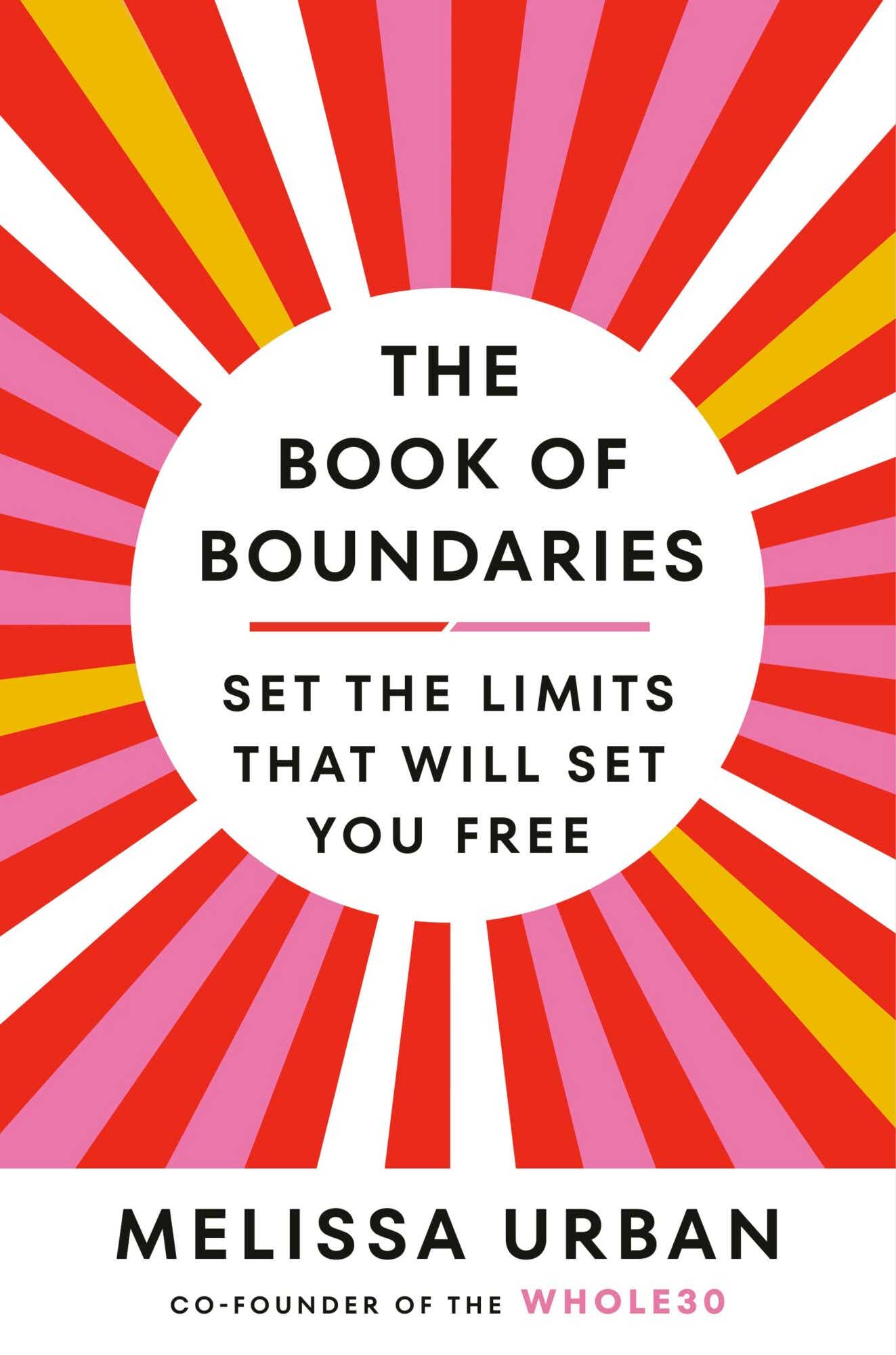A woman named Nancy recently sent me a message on social media: “I take a walk by myself every morning, for my own mental health. Lately, my elderly neighbor has been inviting herself along, waiting for me to come outside, then joining me. She’s very nice, and it’s clear she likes the company, but this is the only alone time I get in my day. How can I say no to her without feeling mean?”
We (especially women) are often told that it’s selfish to put our own feelings and needs first. This is a common objection to boundaries: that setting them feels cold or punitive, like you’re building a wall between people and creating division. But remember, boundaries aren’t walls, they’re fences. And good fences make for good neighbors.
Boundaries allow those who care about us to support us in the way we want to be supported. They provide a clear line between the helpful and the harmful, so people don’t have to try to read our minds. They let us engage in relationships fully and openly, knowing we’ve clearly expressed our limits and made it easier for others to respect our needs. In fact, the best way to preserve a relationship often includes setting boundaries within it.
You’re not being mean when you set boundaries, you’re being kind—to yourself and your relationships. But that doesn’t mean they’re not uncomfortable. Any conflict can be uncomfortable—if your burger comes out rare instead of medium-well, I’m betting at least some of you would just eat it rather than speak up.
My research shows that the main reason people don’t set boundaries where they need them is that it’s so damn uncomfortable. I won’t try to pretend otherwise — I feel it, too. It’s not always easy for me to say no to an esteemed work colleague, to ask my husband for alone time, or to tell my parents, “I won’t discuss this with you further.” But what’s both uncomfortable and damaging is reaffirming the story that someone else’s feelings are more important or worthy than your own — which is what you do every time you swallow your healthy boundary in an effort to keep the peace.
But there is a better way — one that leads to more fulfilling relationships, improved self-confidence, better health, and more time and energy for the things that are important to you. It may be uncomfortable, but I guarantee it will be worth it. Boundaries are how we care, stay supportive, and give to those we love without sacrificing our own health and happiness in the process.
In The Book of Boundaries, I offer scripts organized into three categories: Green, Yellow, and Red. The three-part color-coded system represents the level of threat that stems from the boundary crossing you’re facing. If someone continues this behavior, is your mental health going to suffer? Are your health commitments at risk? Is it putting you in the way of physical or emotional harm?
If that threat is minimal at this point — their behavior is not okay, but it’s the first time it’s happened, or it’s not hugely harmful — you’re still in Green territory, and the language you use to establish or reinforce the boundary should acknowledge that. But if the threat to your relationship is imminent — as in, “If you mention my weight one more time, I’m walking out the door” — you’re in the Red, and your boundary language and the consequences should reflect that, too.
GREEN: Low risk, and the gentlest language. Assumes the other person wasn’t aware they were overstepping and wants to respect your limits. Your boundary language is clear, generous, and very kind. Leaves any potential consequences unsaid in the spirit of good faith.
YELLOW: Elevated risk, and firmer language. Used as a follow-up if your Green boundary isn’t respected, or if historical interactions with this person indicate the threat is higher. Yellow may also include an intended consequence, if appropriate.
RED: Severe risk, and your most direct language. At this point, your health, safety, and/or the relationship are in jeopardy, and your language must reflect the severity of the situation. It’s still kind, but this is their last reminder, and makes it clear that you are prepared to hold your limits. State the consequence plainly here and be ready to enforce it.
Having trouble finding the words in a tough situation? Below are three sample scripts that’ll help you stand your ground.
Setting Boundaries With a Family Member
Issue: “Some of my family members and I don’t agree on political or social justice issues. When we spend time with them, they’re not shy about expressing their perspectives. They’re entitled to their opinions, I suppose, but this kind of commentary is unacceptable to me. Can I even set a boundary here?”
GREEN: (before the visit) “I know we don’t see eye to eye on political or social justice issues, so let’s please agree to not bring up, discuss, or provide viewpoints on those topics during our visit. It’s the only way we’ll enjoy our time together, and I really want to.”
YELLOW: (in the moment) “Stop, Jeff. We all agreed to not bring up immigration, so please change the subject.” Change the subject.
RED: “If you won’t stop talking about your views on immigration [or sexuality, gender identity, reproductive rights, etc.], we’re going to leave.”
Yes, you can set a boundary here. If it’s important to you to maintain the relationship and/or it’s inevitable that you’ll see these family members at gatherings and you’d rather not have it turn into an episode of The Jerry Springer Show, setting and holding a healthy boundary is the only way you’ll accomplish that.
Setting a Boundary With a Friend
Issue: “I have a friend who bails on me constantly. I understand that things happen, but more often than not, we make plans and then my friend will cancel last-minute, always with a weak excuse. What should I do?”
GREEN: (on Friday) “Hey! Confirming the movie on Saturday at 7 p.m. still works for you? It’s been hard to get together lately so before I buy the tickets, I wanted to check in.”
YELLOW: (if they cancel) “This is the third time in a row that you’ve canceled last-minute. I don’t want to keep making plans if you’re not able to stick to them.”
RED: (if they reach back out to reschedule) “You’ve canceled so often, I’d rather not make plans like this again. If you want to stop by one night this week to talk, I’ll be home.”
The Red boundary puts the ball in their court — if they show up, great. If they don’t, you’re not put out one bit, and you can probably call this friendship over.
Setting a Boundary With a Partner
Issue: “My spouse says they’ll help with tasks, like doing the dishes or folding the laundry, but then they only do half the actual task — they’ll wash the dishes but not put them away, or fold the laundry but leave it in the living room. This doesn’t meet my expectations. How can I communicate this?”
GREEN: “Hey, babe, when someone does the dishes, we agreed that also means putting them away.”
YELLOW: “Billy, we need the dishes — the kids are about to set the table, and my job is dinner, not dishes.”
RED: (away from the task, in a calm moment) “We’ve discussed my need for a fair division of household labor, and I’m still regularly completing tasks that we agreed are yours. This is bigger than just the dishes, and the resentment I’m feeling isn’t healthy for our relationship. I’m going to talk with a therapist about next steps, because this is not working for me.”
Establishing an agreed-upon minimum standard of care for household tasks is the first step here, but ultimately, your boundary is, “I’m not swooping in to do the things you’ve committed to doing.” There are no easy answers here, because you can’t force your partner to do their fair share or value your efforts, but your Yellow and Red boundaries demonstrate that you are taking responsibility for your own needs, and that you’ll do what needs to be done to ensure they are met.
Excerpted from The Book of Boundaries: Set the Limits That Will Set You Free by Melissa Urban. Copyright © 2022 by Melissa Urban. Excerpted by permission of The Dial Press, an imprint of Penguin Random House LLC. All rights reserved. No part of this excerpt may be reproduced or reprinted without permission in writing from the publisher.

Melissa Urban is the co-founder and CEO of Whole30 and an authority on helping people create lifelong healthy habits. She is a six-time New York Times bestselling author (including the #1 bestseller The Whole30); and has been featured by People, Good Morning America, The New York Times, The Wall Street Journal, Forbes, and CNBC. She lives in Salt Lake City, Utah. Visit her on Instagram or TikTok.









